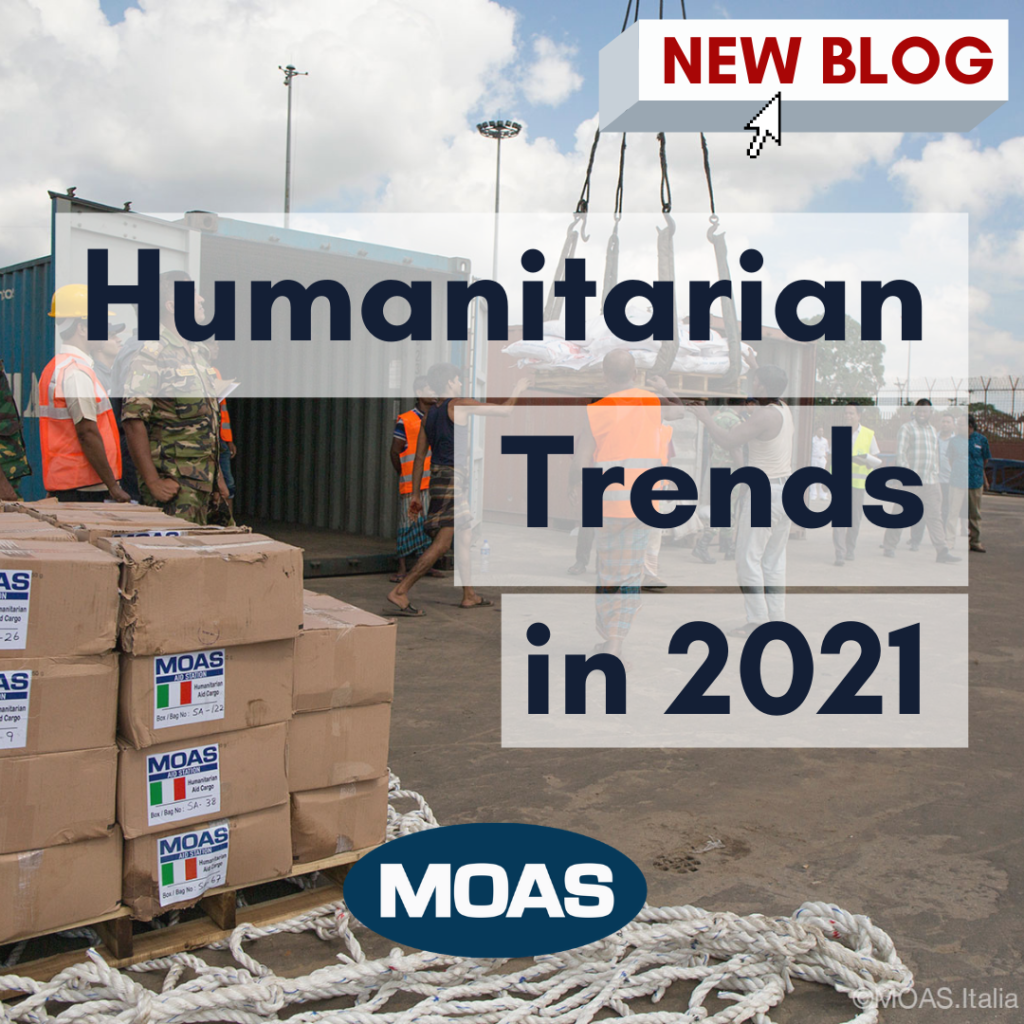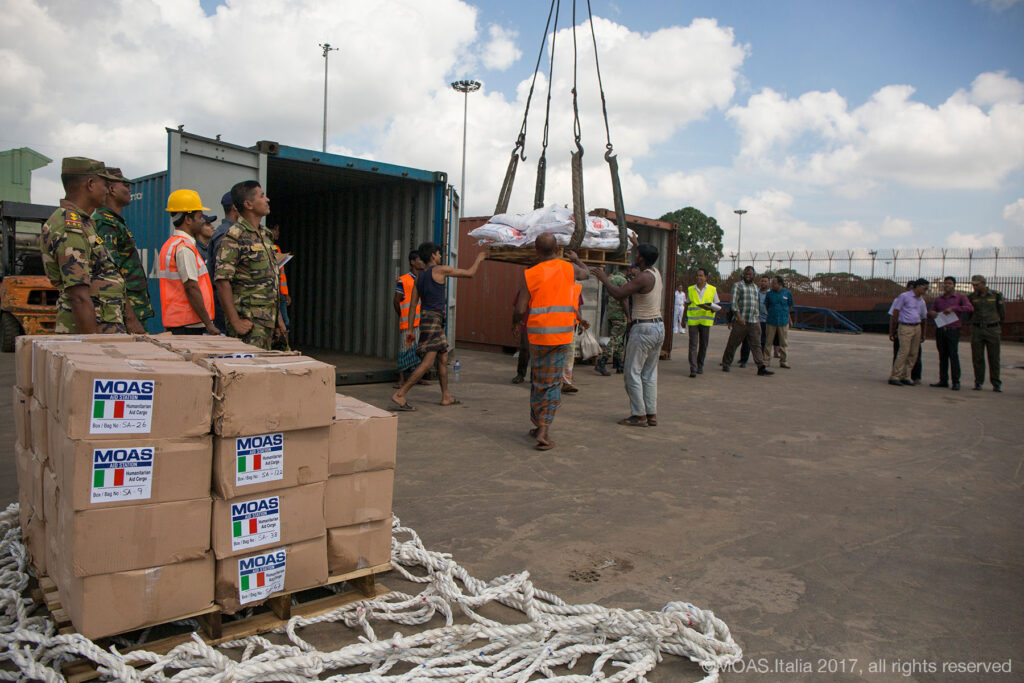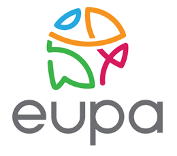In a recent blog we highlighted the humanitarian challenges to keep an eye on during 2021. Such crises will need a comprehensive humanitarian response to be properly addressed and contained. As COVID-19 spread throughout the globe, the humanitarian sector was strongly challenged and called on to rapidly expand and redirect its capacities to the new urgent needs. The humanitarian sector was reshuffled, and the balances of power between different agencies and the States were also reshaped.
Aid policies generally follow trends that are important to watch if we really want to predict how the world will respond to its crises. The first characteristic that was developed and prioritized during this particular time was that of greater flexibility of donors and institutional agencies and a move toward support through cash contributions. In a moment when rapid availability and deployment of international funds to support developing countries was crucial, donors showed more adaptability and openness in fund allocation. Flexible funds allowed for the reshuffling and redirecting of humanitarian resources to developing needs in urgent situations.
Furthermore, during a time when violent political conflicts continue to reduce the humanitarian space in different ways, humanitarian workers still find increasing difficulties in operating in areas affected by crises. COVID further contributed to issues relating to access and movement, stigma against the ‘outsider’ and restriction of safe spaces for aid workers and agencies.
Besides these general main trends, let’s explore the trends in aid policies that are likely to shape 2021 and this year’s humanitarian work, which are just as important to watch as the crises themselves.
Social protection combined with humanitarian programmes
As a result of the developing economic crisis, exacerbated by the restrictions imposed by various countries to try to curb the spread of the virus, many governments launched or expanded their social protection programmes to support those groups of the population who found themselves most in need. Such programmes were very similar in their style and delivery to the already ongoing humanitarian projects in those areas. The main similarity is reflected in the reliance on the provision of cash allowances, vouchers and so on. State programmes have been seen in the form of unemployment supplements, child benefits etc, which are mainly distributed in cash.
It will be interesting to analyse the trend of the relationship between State social protection programmes and humanitarian actions and analyse how these different programmes will intersect or interact, as even though they might look similar, they do have some significant differences. Whilst State-led social programmes might be more stable and long-lasting, there is the issue of neutrality or adequacy: humanitarian programmes are likely to be more neutral and independent than State-led projects, as humanitarian work might be less subject to eligibility criteria as the others, and may be more ready to deal with more flexible situations and transient populations, like for example refugees, whose needs are often not met by States.
Sharing the same burdens and possibilities
A trend that was seen during the time of the pandemic was the aftermath of the power of each single State over multilateralism and global solidarity, which saw instead a significant decline.
The tendencies prompted by the COVID-19 pandemic of a renewed reliance on single States and national decision making, rather than on international collaboration, may lead to even greater inequalities and tensions as we emerge from this crisis. Even humanitarian response plans have been affected by these tendencies, with many international aid budgets having been heavily reduced.
The challenge is then to manage to turn this situation into an occasion for reshaping international relations and global civil society and finding new ways to deal with global problems. After all, the pandemic only reminded us that systemic vulnerabilities and hazards affect us all, as Covid-19 impacted everyone, regardless of State sovereignties.
The biggest challenge in regards of solidarity between States in 2021 will certainly be a vaccine distribution plan which can be as equitable and fair as possible. The trend already seems to be going in the opposite direction, as rich countries have already purchased almost all the available and planned vaccine doses for their countries, whilst poorer countries will not probably receive the first vaccination doses before next year. This issue has been defined by the WHO as a ‘moral catastrophe’, as this “me-first approach” is only likely to lead to further inequalities.
Vaccine distribution is already shaping different trends and future inequalities internationally, from the exclusionary attitude of Israel towards Palestinians for vaccinations to the aim of Jordan to include refugees in the vaccine distribution campaign.
Diversity and inclusion
The Black Lives Matter protests of 2020 shed a light on the issue of diversity, racism and exclusion also within the humanitarian sector. Agencies like the UN received criticisms over its lack of diversity at the top and the aid sector in general was criticised because of its “post colonialism” and paternalistic attitudes.
These criticisms challenged aid agencies to do better, and the 2021 trend will hopefully be that of an increasing attention and care towards the issues of inclusion, equity and diversity within humanitarian agencies as well, a trend that could push new policies, job titles, reforms and training.
Mega crises of tomorrow
One thing that Covid-19 has certainly taught the world is the need to be prepared to face crises like these. What if this pandemic is only a taste of what comes next? After all, some world crises already are at alarming levels which could disrupt world systems. Threats like hunger, affecting significant areas of our globe, climate change or other disease outbreaks are already putting the world at increasing risks for future global crises and therefore urgently need sustained humanitarian action.
Preparedness will be the key.
As the pandemic showed how a crisis in one sector can spill over into almost every other section of society, crisis responses need to be broader and more holistic. In the wake of the pandemic, the right way to deal with risks and crises could be the one of anticipating, predicting and forecasting risks and planning and budgeting for multi-lateral, multi-sectoral and international responses to these.
Preventive action will be the way forward also for humanitarian organisations, although the resources and capacities needed to be ready to respond to the crises of tomorrow might not still seem adequate. The risk of not working towards such reforms is that international systems overall might remain not properly equipped to respond to the scale and complexity of possible future crises.
Final thoughts
As the world was disrupted by the COVID-19 pandemic, the humanitarian sector had to deal with big changes and reshaping, as the very nature of humanitarian work is that of filling the gaps of providing assistance to those in need. The challenges of 2021 will be important to control if they are to be dealt with adequately. Reading the trends of aid policies can help us better understand where the humanitarian sector is likely to address its resources in this upcoming year, during which many of the things and systems broken by the pandemic will need to be rebuilt better.
If you are interested in the work of MOAS and our partners, please follow us on social media, sign up to our newsletter and share our content. You can also reach out to us any time via [email protected]. If you want to support our operations, please give what you can at www.moas.eu/donate/.



